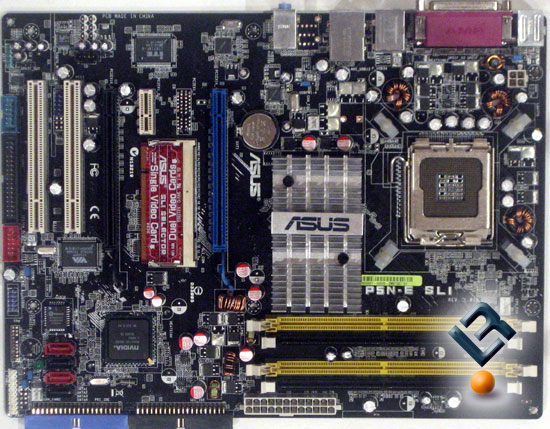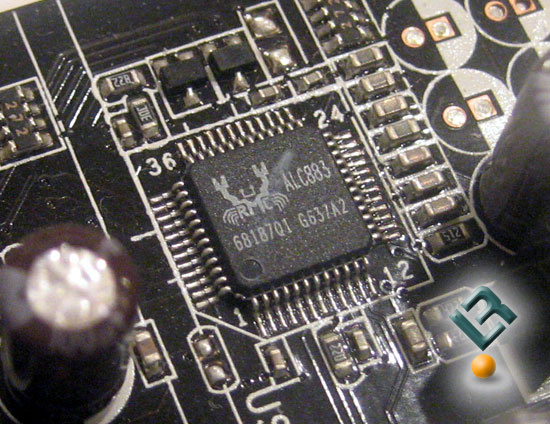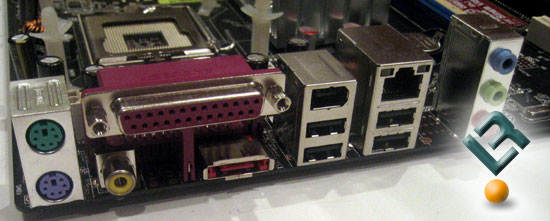Asus P5N-E SLI Motherboard Review – The 680i Killer
Board Layout

As you look at the P5N-E SLI, you notice a few things right off the bat. The first thing that got me was the use of the paddle for switching from Single Card to SLI. I am sure this helps keep the cost of the board down, but I still got a little nostalgic. Also, Asus has a very large heatsink on the northbridge of this board. That is one huge heatsink! Anyways, lets look a little closer.

At the top right of the board, we have our CPU socket, which is fairly clear of any obstructions. Our Corsair water cooler fit on with absolutely no issues at all. Right under the CPU socket is that heatsink we were talking about. Though it is very large, it also is a passive cooler which gets very warm, especially once you turn the juice up in overclocking.
To the right of the heatsink we find our four DIMM slots. This board supports up to 8GB of DDR2 800/667/533 in a dual-channel configuration. To the right of the DIMM slots we see our 24-pin poiwer connector, which is located very nicely at the edge of the board. Here is a closer look at that heatsink…

Big, isn’t it?!?!?

The bottom right of the board is where we find the Nvidia south bridge. I was very surprised that this chip was not cooled with anything! It came naked as a Jaybird! This chip also gets VERY hot! Anyone that will be overclocking this board will want to find an aftermarket cooler to put on the board. Fortunately, Asus did include the proper holes in the motherboard to mount a cooler. I am still scratching my head as to why Asus did this.
Just under the southbridge are the four SATA ports that are on the board. These ports are capable of moving data at 3.0 Gb/s, and support RAID0, 1, 0+1, 5, and JBOD.
Also in this area of the board, we find our bios chip, the clear cmos jumper, and the I/O pins. Also, the VIA VT6308P IEEE chips is located here.

Moving on to the lower left of the board, we have our floppy connector sandwiched in between a USB and Firewire header. These are located at the edge of the board, which is perfect! Some may not like the location of the floppy and may have issues with cable length. That could be a problem. But does anyone still actually use those things?
Right above the floppy we have two PCI slots, two x16 PCI-e slots and one x1 PCI-e slot. The x16 slots will run at x16 speeds when used in a single card configuration only. Once you run an SLI setup, the speeds drop to x8 for both slots.
Right next to the x1 PCI-e slot we see the SLI paddle. It has been a while since we have seen this on a board. It probably helps to keep costs down for production, which is fine with me. The paddle really is a set it and forget it item on the board.

On this part of the board we also find our audio chip. Audio on the Asus P5N-E SLI is powered by the Realtek ALC883. This chip features a 6-channel CODEC, audio jack sensing and enumeration technology, and multi-streaming. There are coaxial and S/PDIF out ports on back I/O for use with the audio on the board.

The top left of the board does not really much of interest. You have your battery just above the top x16 PCI-E slot. And your 4-pin 12v power connector is located just behind the I/O ports, at the top of the board which is an excellent location for wire management.

The back I/O ports that are included on the board are: parallel, the coaxial and S/PDIF out ports, e-SATA, firewire, 4 USB, your lan and then assorted audio jacks. Pretty much a typical setup.
Let’s move on to our testing.

Comments are closed.